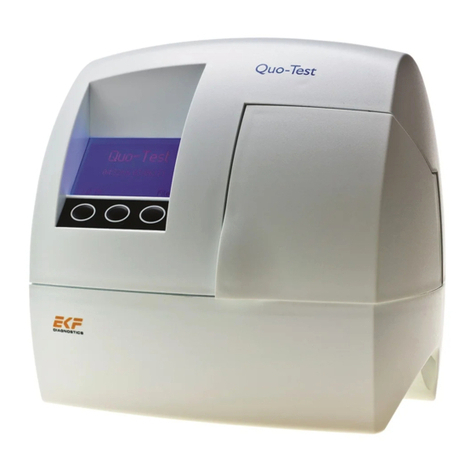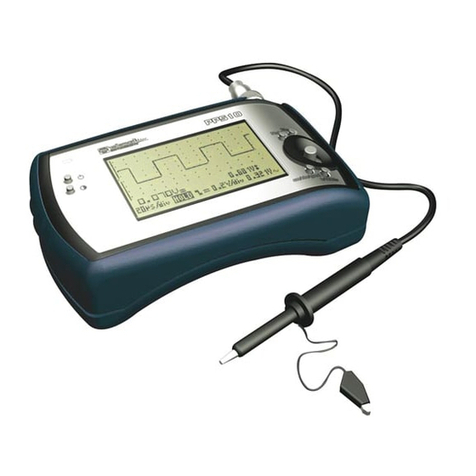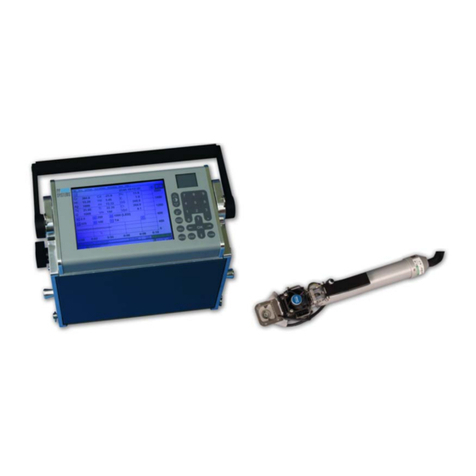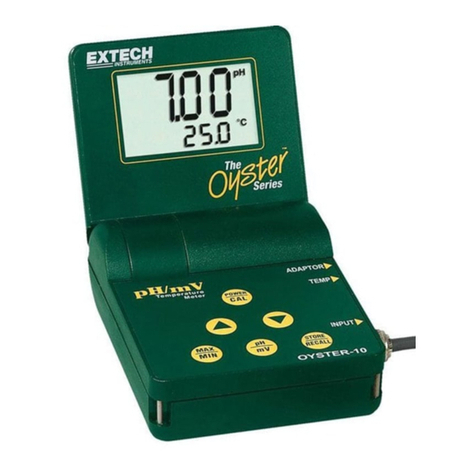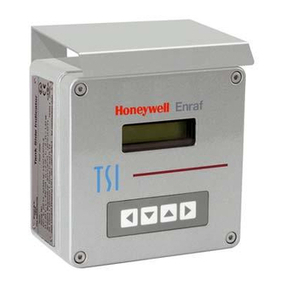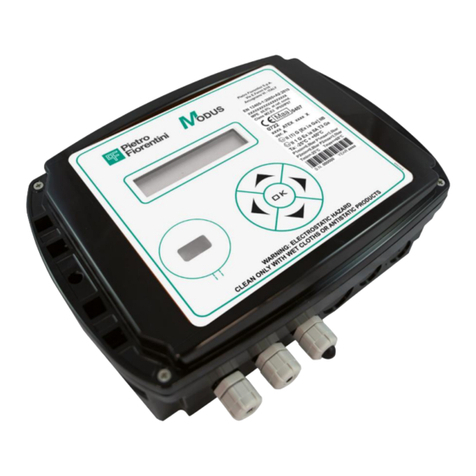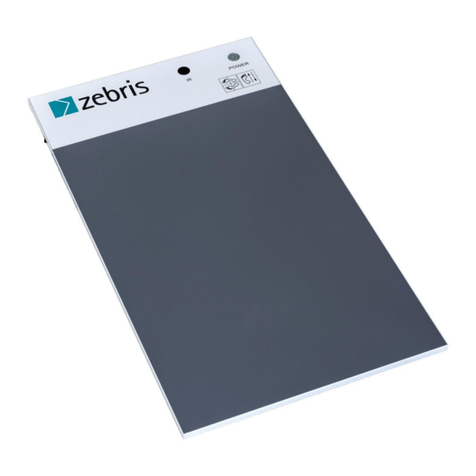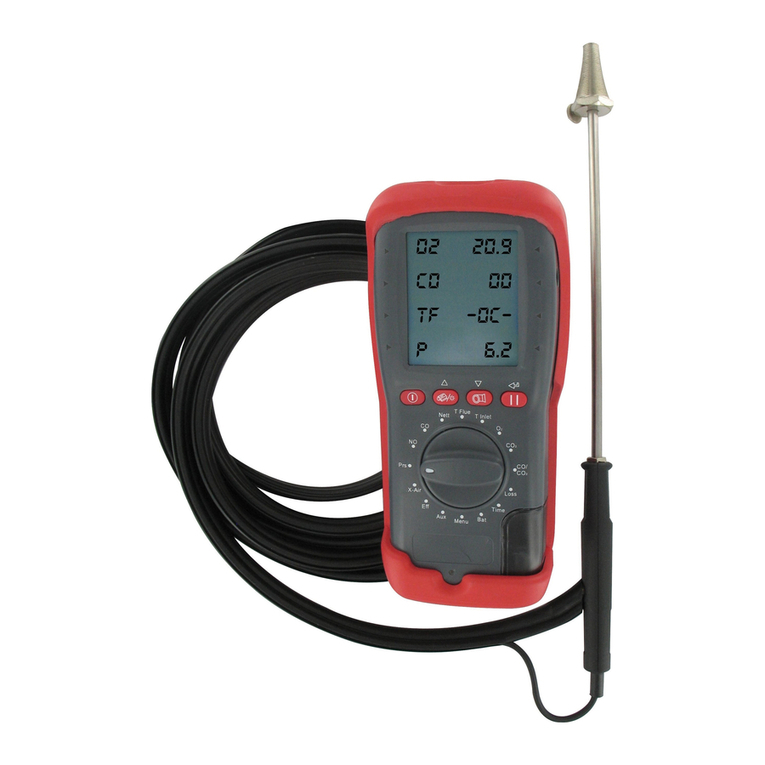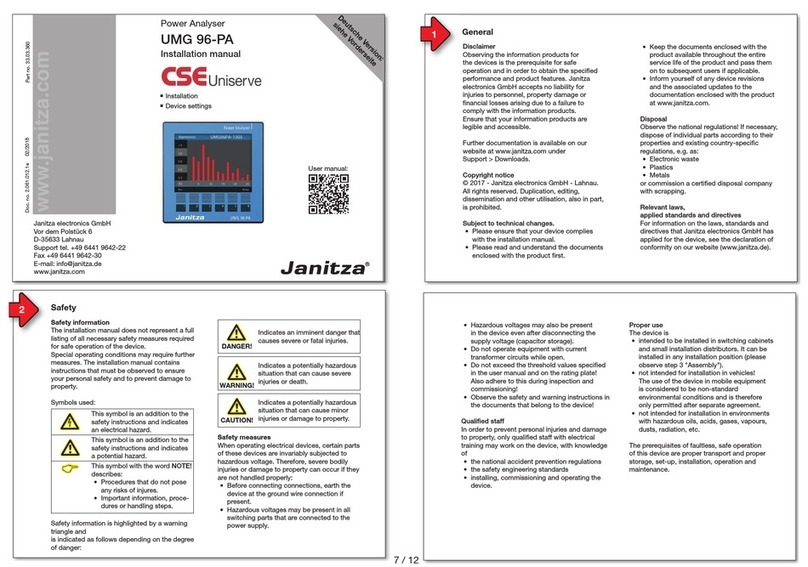EKF Lactate Scout+ User manual

NEW
Compensated
for hematocrit
Integrated
BluetoothTM
Technology
Lactate Scout+
Diagnostics
for life
Results in 10 seconds
Only 0.2 μl sample volume
Simple to use
Mobile and ergonomic
Lactate Scout+
Fast, accurate and reliable
Lactate measurement

Simple, accurate and reliable lactate measurement in 3 easy steps
• Enzymatic amperometric detection method
• Results within 10 seconds
• Measuring range: 0.5 - 25 mmol/L
• Compensates for the influence of low and high hematocrit levels
• Imprecision: ± 3 % (minimal standard deviation: ± 0.2 mmol/L) for Hct range 35 – 50%;
± 4 % (minimal standard deviation: ± 0.3 mmol/L) for extended Hct range
• Test solutions available for function control
• Insert/remove sensor to turn on/o
• Jog dial navigation
• Only 0.2 µl of capillary blood required
• Pre-calibrated sensors
• Device calibrated by simple coding
• Lactate measurement, date/time, mode, temperature and memory ID on a single display
• Automatic self test
Easy to use
Fast and
accurate
Performance
measurement
• Single and step-test measurements (resting/exercise/recreation)
• Stopwatch and countdown timer functions
• Lactate Scout Assistant software available for performance management
• Free Lactate Scout data link software for simple transfer of results to PC
Practical and
reliable
• Stores up to 250 results
• 1,000 tests using just 2 x AAA batteries
• Integrated Bluetooth™ connectivity
• Pocket-size: 91mm (h) x 55mm (w) x 24mm (d)
• Lightweight: 80g
• Operating range: 5-45°C and max. 85% humidity
Result appears in 10 seconds.Remove sensor and place into
analyser.
1
Prick finger and collect blood by
touching with sensor.
2 3
Manufacturer
SensLab GmbH
Bautzner Strasse 67
04347 Leipzig
Germany
+49 (0) 39203 511 0
sales@ekfdiagnostics.com
ekfdiagnostics.com
Revision EN EU 6.1-02.17
Diagnostics
for life
Distributed by

User Manual
Rev. 2.0–11/2013
Sales and Service:
EKF-diagnostic GmbH
Ebendorfer Chaussee 3
39179 Barleben
Manufacturer:
SensLab GmbH
An EKF Diagnostics Company
Bautzner Str. 67
04347 Leipzig
Phone: +49 (0) 39203-785-0
Fax: +49 (0) 39203-785-24
www.ekfdiagnostics.com
info@ekfdiagnostics.com
Phone: +49 (0) 341-234-18-41
Fax: +49 (0) 341-234-18-40
www.senslab.de

2
Copyright© 2013 SensLab GmbH
No part of this publication may be
reproduced, transmitted, transcribed,
stored in any retrieval system or
translated into any human or computer
language by any means or in any form,
without the prior written permission of
Senslab GmbH.
Part Number: 7023-9012-2350
Rev. 2.0 –11/2013
Lactate Scout+ User Manual
Valid from serial no. XXXXX02135
Manufacturer
SensLab GmbH
Bautzner Str. 67
04347 Leipzig
Germany
Phone: (+49) 0341 - 234 18 41
Fax: (+49) 0341 - 234 18 40
www.senslab.de
Sales and Support:
EKF-diagnostic GmbH
Ebendorfer Chaussee 3
D-39179 Barleben
Germany
Service: +49 (0) 39 203 78514
www.ekfdiagnostics.com
This product has been tested to the requirements
of CAN/CSA-C22.2 No. 61010-1, second edition,
including Amendment 1, or a later version of the
same standard incorporating the same level of
testing requirements.

3
Intended use and safety guidelines
• TheLactateScout+mayonlybeused
with the Lactate Scout sensors to
determine the lactate concentration in
capillary whole blood. The Lactate Scout
sensors are only for single use.
• Onlyforexternalapplicationoutsidethe
body. (In-vitro diagnostic application)
• LactateScout+issuitableforself-testing.
It can also be used by qualied staff in
various medical faculties. Test results
should only be used as guidance in making
decisions for further treatment of patients
following a suitable period of evaluation.
• KeepLactateScout+andaccessoriesoutof
the reach of children (choking hazard due to
small parts).
• Theprincipalriskofinfectionisinthe
handling of blood samples when measuring
lactate concentrations.
•Onlyundamagedandunusedlancets
and sensors may be used. Used sensors,
lancets and cellulose cloths pose a risk of
infection. These must be safely disposed of
as household waste following use.
• Protectiveglovesmustbewornwhen
performing tests on third parties.
• Thesterilesingleuselancetsmayonly
be used to draw capillary blood on the
ngertips or earlobes.
Unpacking
Unpack the system and check that the
following components are present and
undamaged in the pack. If there is anything
missing contact customer support.
Lactate Scout+ Analyzer / 1,5V AAA/LR03 batteries (2x)
User manual

4
Contents
1. Getting started
Lactate Scout+ analyzer and sensors 6
Inserting the batteries 7
Code setting 8
Temperature sensor 9
Care and cleaning, Disposal 10
2. Taking a measurement
Inserting a sensor 12
Blood sampling 14
READ INSTRUCTIONS PRIOR TO USE
Onlyusethedeviceforthepurposedescribedinthismanual.
Do not use any other accessories than those supplied by the manufacturer.
Do not use the device in case of malfunction or damage.
In case of non-intended use the safety measures for the device may become ineffective.
KEEP INSTRUCTIONS FOR USE
Not conforming to cautions may lead to serious health damage.
Not conforming to information marked with “attention” may cause faulty measurements or damage of the device.

5
3. Performing step tests
Settings for step tests 16
Afterload timer 18
Timing functions for step tests 18
Test results 19
Turning the device off 19
Deactivate the step test mode 19
4. Settings
Selecting and modifying settings 20
5. Data storage
Transferring data to the PC 23
6. Troubleshooting
Functionality check in dSC mode 26
Error description, potential causes and solutions 28
7. Technical specications
Parameters 32
Explanation of symbols 33
8. Accessories
Purchasing accessories 34

6
Getting started
Lactate Scout+ analyzer
· Insertion slot (1) for the sensor
· Display window (2) for the display of test
readiness, the blood lactate concentration,
warnings and setting options
· Scroll wheel (3) for easy operation of the
analyser. Scroll up and down to view menu
options. Press the wheel to access the menu
Scrolling: Select option or search
Pressing: Activate/conrm selection or
deactivate/cancel selection
Turn on or off by pressing for 2 seconds
Lactate Scout+ sensor
· Measurement chamber (4) with opening for
the collection of the blood sample
· Connecting contacts (5) must be inserted
completely into the insertion slot of the
measuring device with the black contact
surface facing up
1
2
3
4 5

7
Inserting the batteries
Batteries are included with your Lactate Scout+.
Two LR03 / AAA (1.5 V) batteries must be
inserted prior to the initial use of your Lactate
Scout+. Alkaline or zinc carbon batteries can
beused.Onlyusebatteriesofthesametype.
If the time to replace the batteries exceeds
one minute, the date and time setting will be
lost and must be re-entered (see page 20). The
stored data and settings will be kept, however.
The Lactate Scout+ must be turned off to
replace the batteries. Gently, push the battery
cover outward. Remove the used batteries.
When inserting the new batteries, ensure that
the polarity is correct (+/-). The batteries must
be inserted in the same direction. Push the
battery cover back until it snaps into place.
Attention: In the case of prolonged periods
of non-use and when ying, the batteries must
be removed.
Please note: Used batteries must not
be disposed of with household waste.
Return them to the shop or any public
collection point.

8
Code setting
The rst time the Lactate Scout+ is used,
a two-digit code must be set. This code is
printed on the label of the sensor vial.
· Turn on the Lactate Scout+ device by
pressing the scroll wheel for two seconds.
The request to set the code appears on the
display(blinking)“setCODE”(1).
· After pressing the scroll wheel again briey,
the code setting menu is activated and the
left code number will blink (2). Next, set the
left digit listed under “code” on the sensor
container by scrolling up or down and nally
conrm by briey pressing the scroll wheel.
· To enter the right code digit, which will now
be blinking (3), repeat this process. The
device is now coded (4).
The nalisation of coding is conrmed by a
signal tone. To complete the process, insert
a sensor or turn off the device.
1 2
3 4
Attention: Prior to using a new or other sensor
container, it is necessary to always check whether the
code on the label corresponds to the current code in
the device. If necessary, the latter must be reset.
Getting started

9
Temperature sensor
In order to be able to achieve equally reliable
test values under different climatic conditions,
the Lactate Scout+ is equipped with a
temperature sensor. It is located underneath
the insertion slot for the sensors.
The functionality of the temperature sensor
impacts the establishment of test readiness
as well as the achieved test values. Therefore,
contamination must be avoided. To ascertain
the ambient temperature, ensure that the
temperature sensor is not touched by hand
or covered.
The ambient temperature of the device can
be displayed for 2 seconds by pressing the
scroll wheel briey in test mode.
Attention: Ensure that the measuring device
and sensors do not vary considerably from
each other in temperature prior to a test (e.g.
for winter sports or after storing the sensors in
the refrigerator). If necessary, allow sufcient
time for the temperature of the sensors and the
measuring device to adjust.

10
Care and cleaning
The Lactate Scout+ measuring device is an
electronic precision measuring device and must
be handled and stored with care. It must be
protected from liquids, moisture, prolonged
solar radiation and excessive effects of cold and
heat (below 0°C and above +50°C).
Heavy mechanical loads, improper handling
and contamination can partially or completely
restrict functionality. Ensure that no liquid or
dirt enters the inside of the device through the
openings (insertion slot for sensor, scroll wheel
and battery housing).
If blood, test solution, dust or other
contaminants are present on the housing, it
must be cleaned using a soft, lint-free towel
or cellulose cloth (e.g. paper towel), which
has been pre-soaked in a mild cleaning agent
(e.g. water with a minimal amount of washing-
up liquid), and then wiped dry. Medical
staff should adhere to the regulations of the
medical facility in this case.
Never insert foreign objects or sensors
other than Lactate Scout sensors into the
insertion slot.
Disposal
In the case of blood lactate measurements it
is impossible to exclude the possibility that
the device will come into contact with blood.
As a result, there is a risk of infection. Dispose
of the device with household waste after
removing the batteries.
(The device does not fall under the application
of the European Directive 2002/96/EC
regarding electrical and electronic equipment).
Attention: If the device housing is opened
by the user, this will invalidate all warranty and
liability claims. Disinfecting agents containing
isopropanol will result in the permanent
tarnishing of the display window.
Getting started

11

12
Taking a measurement
Inserting a sensor
Remove a sensor from the dessicant vial.
The sensor must be inserted into the insertion
slot of the device with the black connection
contact surfaces facing up (see right) (1).
Regardless of whether the device was on or off
before, the test mode is automatically started
upon inserting the sensor.
After a brief (one second) display of the
code, a blinking drop appears on the display
indicating that the device is ready to test (2).
1
2

13
Attention: Store the sensors only in the original
container and within the specied temperature
range of -18°C to +8°C. Only remove the sensors
for the purpose of testing. Close the container
again immediately. Never leave open! Protect
against solar radiation, prolonged temperatures
above 25°C and moisture. Temperatures outside
the specied range during transportation and
storage may inuence the function of the sensors
and lead to faulty results.
Sensors, once removed from the container, must
be used immediately. The sensors must be kept at
room temperature with the measuring device at
least 20 minutes (at least two hours when stored
in the freezer) in the closed container prior to
testing. The expiration date of the sensors on the
label of the sensor container must be observed.
Following the initial opening of the container, the
sensors must be used within 90 days.

14
Blood sampling and analysis
Produce a drop of blood with a sterile single
use lancet approved for capillary blood
sampling. Follow the instructions for use of
the lancet. The site where blood is drawn
must be clean and free of sweat. Lactate
accumulates on the skin from perspiration
and leads to falsely elevated results. Hands
(or earlobes) must be disinfected and washed
with fresh, hygenically-safe water. Dry hands
thoroughly prior to testing. Avoid pressing on
the puncture site too extensively as there is a
risk that sweat and/or tissue uid can merge
with the blood droplet and falsify the test
result. The drop of blood must not run.
Bring the ngertip with the droplet of blood
close to the tip of the sensor that has been
inserted in the device so that the blood can
be absorbed (3).
Oncethemeasurementchamberofthe
sensor is completely lled, an acoustic
conrmation signal sounds and the test
procedure will be activated. “LAC” and a
Caution: The safety lancet is intended for
single use and must be disposed together with
the used sensor (household waste).
Attention: There is a risk of erroneous
(segmented or insufecient) lling of the
measurment chamber of the sensor. This may
occur if the subject or user is moving when a
sample is taken. To avoid this, ensure that the tip
of the sensor remains in contact with the drop of
blood whilst the measuring chamber is lling.
circular symbol with a progress bar appear
on the display as well as the assigned memory
space number (4).
After ten seconds, a second acoustic signal
sounds and the test result is displayed in
the measurement unit “mmol/L” (5).
This is stored automatically along with
the date and time of the test.
Taking a measurement

15
3
4 5

16
Settings for step tests
Lactate Scout+ allows for the recording of
values for step tests. The general procedure for
preparation, sampling and measurement is the
same as the individual test (see pages 12 - 15).
After inserting a sensor and conrmation
of test readiness (blinking drop) select the
appropriate step test phase for the subject.
The step test phases are displayed as follows:
1. PL: Preload (for resting values)
2. LOAD: Load (for load values)
3. AFL: Afterload (for afterload values)
It is possible to begin with any of the step test
phases, however it is not possible to change
later. (e.g. a preload cannot be selected after
the load).
Performing step tests
1 2
3 4

17
The number of the lactate concentrations
recorded per step test phase correlates to
the number of conducted tests. The count of
tested values occurs separately for every step
test phase and is automatically displayed on
the screen to the right of the respective step
test phase symbol (4). Onetestisintended
for every load step of the step test phase
(“LOAD”).
Upon inserting a new sensor, the last selected
step test phase is preset and is displayed
together with the next digit for the continued
test. Now you can perform this test or change
by scrolling up to the following phases or exit
the step test mode.
To exit the step test mode, turn the scroll
wheel directly following the test while the
sensor (5) is still inserted until “End” (6)
appears on the display. Conrm by pressing
the scroll wheel. Exiting is also possible prior
to a new test. In this case, after achieving test
readiness (7), scroll to “End” (8) and briey press
the wheel. The Lactate Scout+ is now in the
individual test mode once again (blinking drop).
Attention: One hour after the last step test
measurement, the measuring device automatically
returns to the individual test mode.
56
7 8

18
Afterload timer
If you select the test mode “AFL” for an
afterload test, the time in minutes and seconds
elapsed from the last measurement in the step
testphase“LOAD”willappearbelowonthe
display instead of the time. In addition, a brief
signal tone sounds after every minute that
passes. After no more than twenty minutes, the
timer on the display will remain at “20:00” and
will only be reset upon restarting a step test.
The afterload timer will only be activated if one
or more load tests were performed.
Timing functions for step tests
To be able to control and adjust the load
intensity and step length for eld tests
more efciently, the Lactate Scout+ offers
supplemental application possibilities in the
setting mode (see chapter 4).
Withthestopclock“CLOCK”,youcanmonitor
your lap time (maximum of ten minutes per
load step), see page 20.
UsingtheCountdownfunction“COUNT
DOWN”precededbythestepduration“DUR”,
it is possible to set times of up to 10 minutes
and to set a signal as they elapse (page 20).
Display of the expired time following
the last load measurement via the afterload timer
2:56
Performing step tests
Table of contents
Other EKF Measuring Instrument manuals
Popular Measuring Instrument manuals by other brands

VOLTCRAFT
VOLTCRAFT 10 11 38 operating instructions
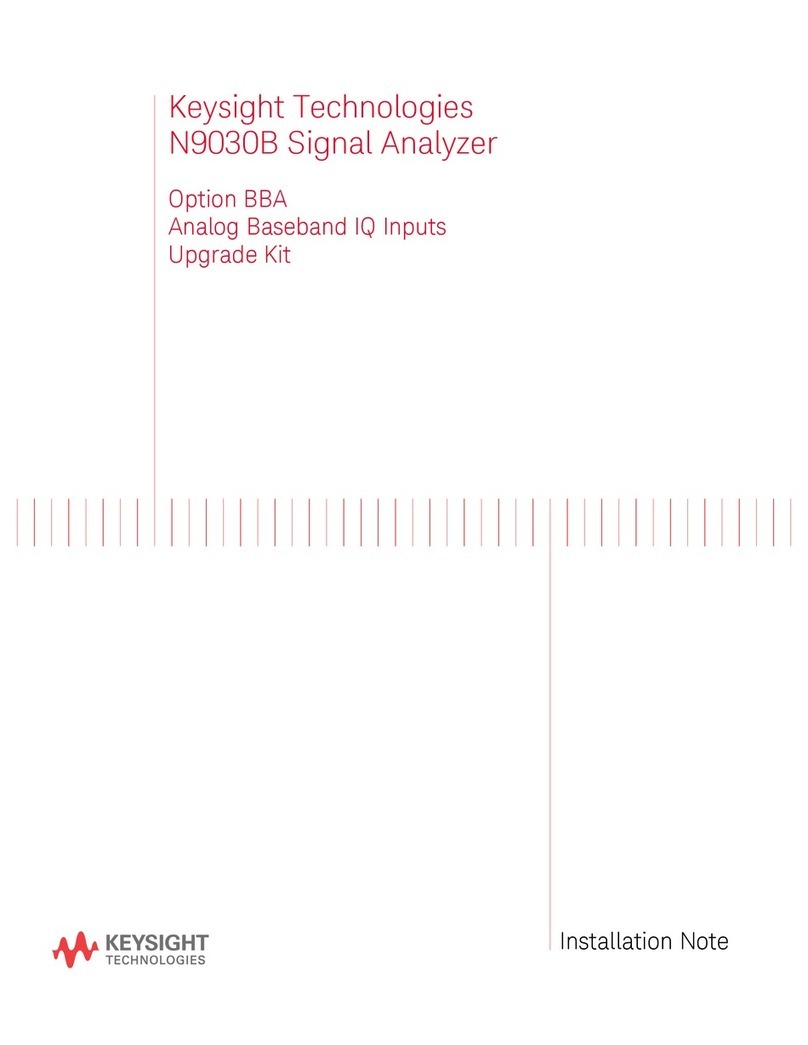
Keysight Technologies
Keysight Technologies N9030B Installation note

Brantz
Brantz International 3 Pro operating instructions
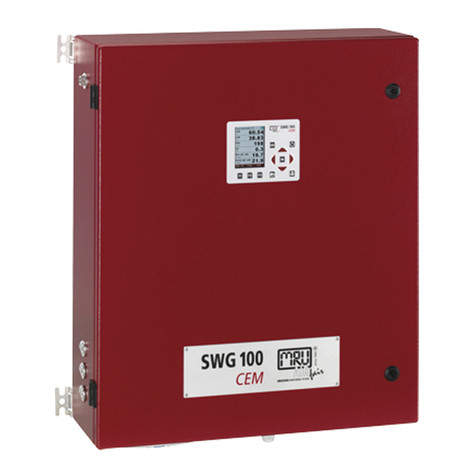
mru
mru SWG100 CEM user manual

Dostmann Electronic
Dostmann Electronic P300 Series Operating lnstructions
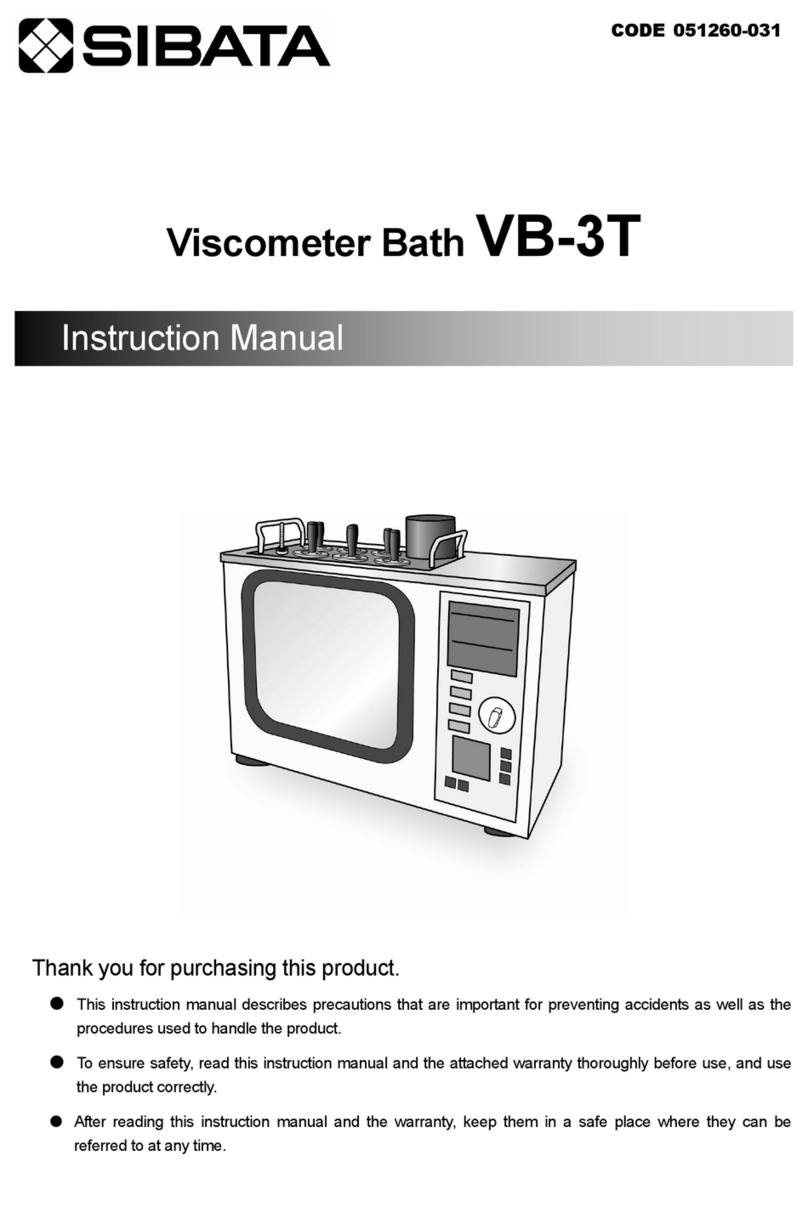
Sibata
Sibata VB-3T instruction manual

